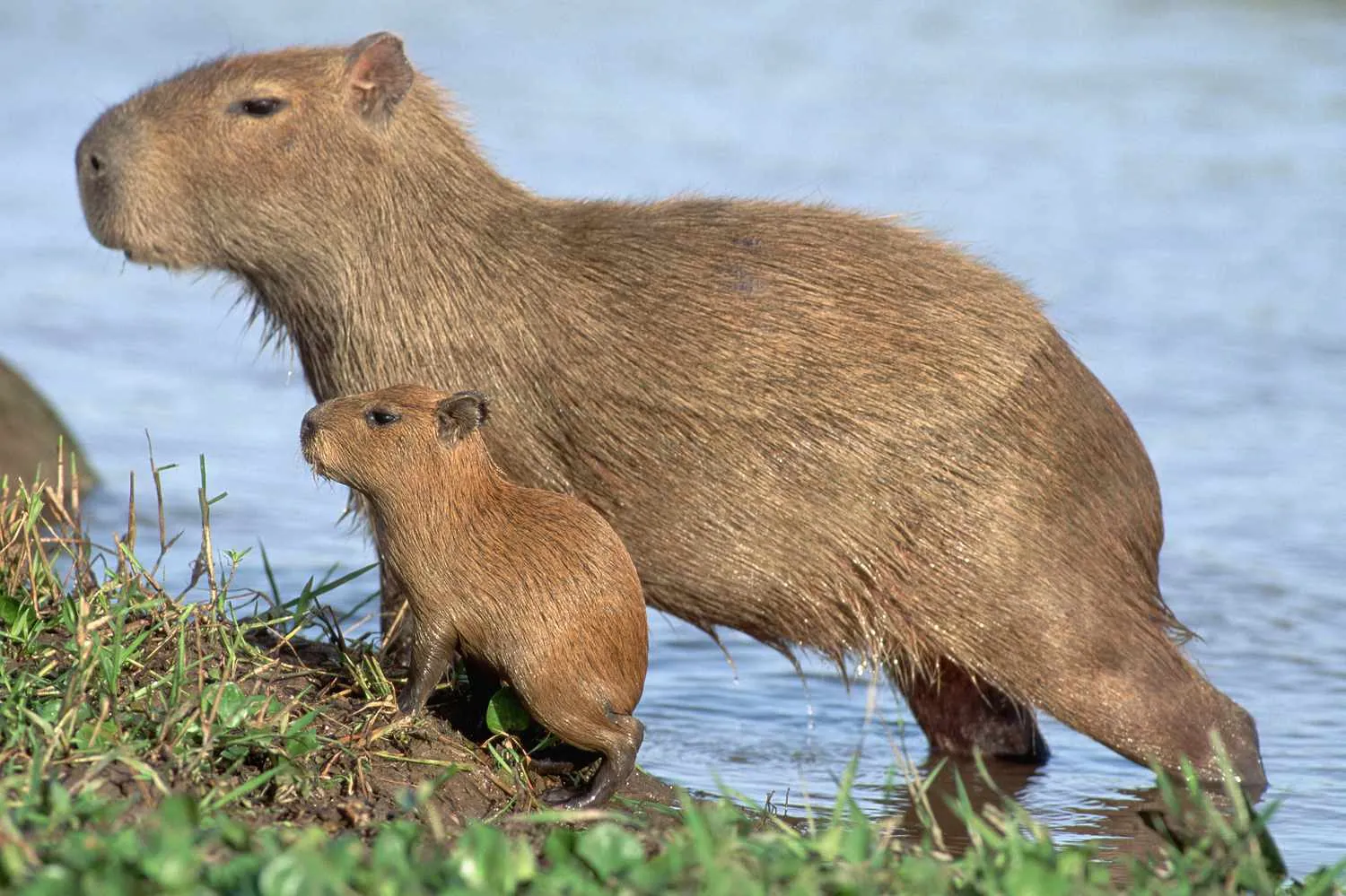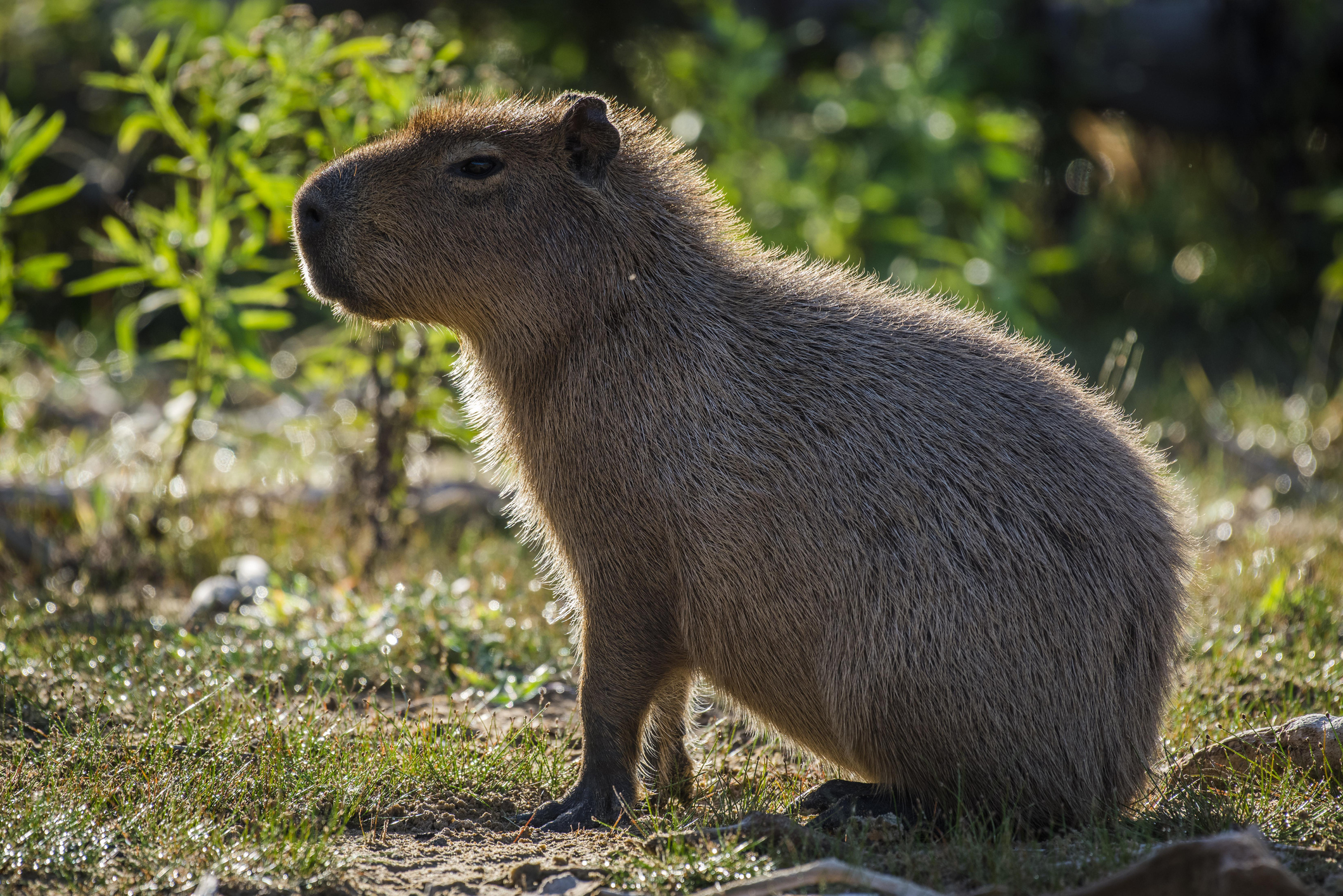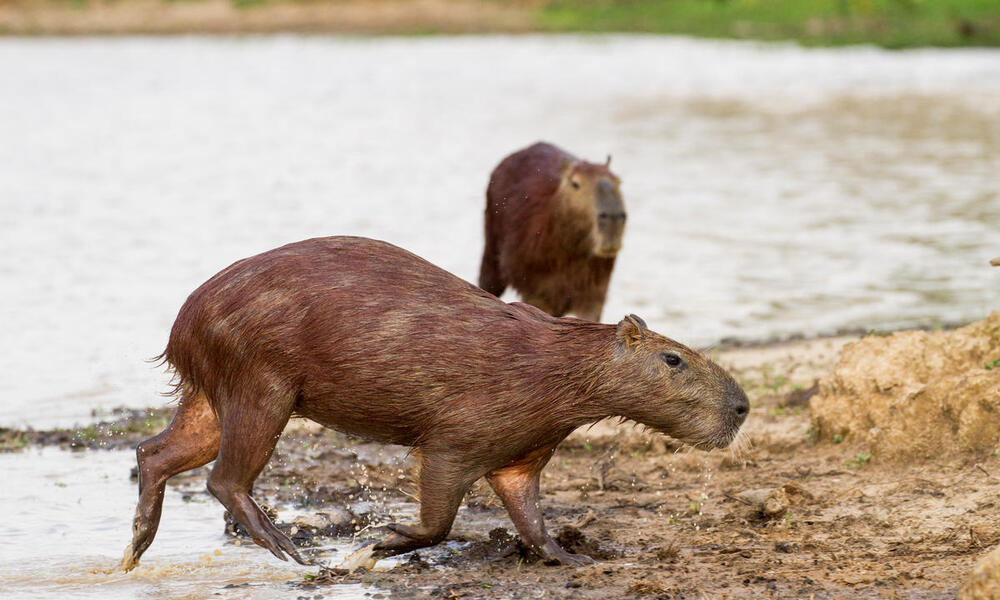If you’ve ever wondered, “What will eat capybaras?” you’re not alone. These gentle giants of the rodent world are fascinating creatures, but their peaceful nature makes them a target for some of the most skilled predators in the animal kingdom. Let’s explore the predators that hunt capybaras, how these rodents defend themselves, and why their survival is crucial to their ecosystems.
Who Are the Capybaras?

Capybaras are the world’s largest rodents, native to South America. They’re semi-aquatic, spending much of their time in or near water, and are known for their social behavior, often living in groups of 10 to 30 individuals. Despite their size (they can weigh up to 150 pounds!), capybaras are herbivores, munching on grasses, aquatic plants, and even tree bark .
But their size and gentle nature don’t make them invincible. In fact, capybaras face threats from a variety of predators, both on land and in water.
Top Predators of Capybaras
Capybaras are a tasty meal for many predators. Here’s a breakdown of who’s on the hunt:
1. Jaguars: The Apex Predator
Jaguars are the most feared predators of capybaras. With their powerful jaws and stealthy hunting skills, they can take down even adult capybaras. Jaguars often ambush their prey near water, using their sharp claws to deliver a fatal bite to the spine or neck .
Why capybaras?
- Capybaras are large, providing a substantial meal.
- Their semi-aquatic lifestyle makes them vulnerable near water, where jaguars excel.
2. Caimans: The Water Ambushers
Caimans, close relatives of crocodiles, are another major threat. These reptiles lurk in rivers and swamps, waiting for capybaras to come close. With razor-sharp teeth and lightning-fast strikes, caimans can drag capybaras underwater to drown them .
Fun fact: Despite viral videos showing capybaras and crocodiles coexisting peacefully, caimans don’t hesitate to attack when hungry .
3. Green Anacondas: The Constrictors
Green anacondas are massive snakes capable of swallowing capybaras whole. They use their powerful bodies to constrict their prey, suffocating them before consumption. While adult capybaras are less common targets, young capybaras are at high risk .
4. Pumas: The Silent Stalkers
Pumas, also known as mountain lions, are opportunistic hunters. When other prey is scarce, they’ll target capybaras. With their incredible speed and agility, pumas can ambush capybaras, delivering a fatal bite to the neck .
5. Ocelots: The Stealthy Hunters
Ocelots are smaller than jaguars but no less deadly. These nocturnal cats stalk capybaras near water, using their sharp claws and teeth to deliver a quick kill. They often target younger or weaker capybaras .
6. Harpy Eagles: The Sky Predators
Harpy eagles are one of the few airborne predators capable of taking down capybaras. While they usually target smaller prey, young capybaras are vulnerable to these powerful birds, which can crush skulls with their talons .
7. Humans: The Biggest Threat
Sadly, humans are also predators of capybaras. Hunted for their meat and hides, capybaras face significant pressure from human activities. In some regions, overhunting has led to local extinctions .
How Do Capybaras Defend Themselves?

Despite being prey animals, capybaras aren’t defenseless. Here’s how they survive in the wild:
- Group Living: Capybaras live in large groups, which helps them detect predators early. They use alarm calls (like barks) to warn others of danger .
- Speed and Agility: Capybaras can run surprisingly fast and are excellent swimmers, often escaping predators by diving into water .
- Size and Strength: Adult capybaras are large and strong, making them harder targets for smaller predators .
Why Capybara Predators Matter
Understanding what eats capybaras isn’t just about curiosity—it’s about conservation. Capybaras play a vital role in their ecosystems:
- Ecosystem Engineers: Their grazing habits help maintain vegetation balance, and their burrows provide shelter for other animals .
- Prey for Predators: Capybaras are a key food source for apex predators like jaguars, helping maintain the food chain .
However, habitat loss and hunting threaten capybara populations, which could disrupt entire ecosystems .
FAQs About Capybara Predators

1. Do crocodiles eat capybaras?
While crocodiles and capybaras are often seen together peacefully, crocodiles can and do eat capybaras, especially younger or weaker ones .
2. Are capybaras endangered?
Capybaras are currently classified as “Least Concern” by the IUCN, but their populations are declining due to habitat loss and hunting .
3. Can capybaras outrun their predators?
Yes! Capybaras are fast runners and excellent swimmers, often escaping predators by diving into water .
4. What’s the biggest threat to capybaras?
Humans are the biggest threat, hunting capybaras for their meat and hides, and destroying their habitats .
Final Thoughts
So, what will eat capybaras? From jaguars to anacondas, these gentle giants face a range of predators. But capybaras are more than just prey—they’re vital to their ecosystems, and their survival is key to maintaining biodiversity. By understanding their predators and the challenges they face, we can better appreciate these remarkable creatures and work to protect them.
Next time you see a capybara lounging by the water, remember: they’re not just cute—they’re survivors in a world full of predators.
Keywords: what will eat capybaras, capybara predators, capybara diet, capybara conservation, jaguars and capybaras, caimans and capybaras, green anacondas and capybaras, capybara survival, capybara ecosystem role.
